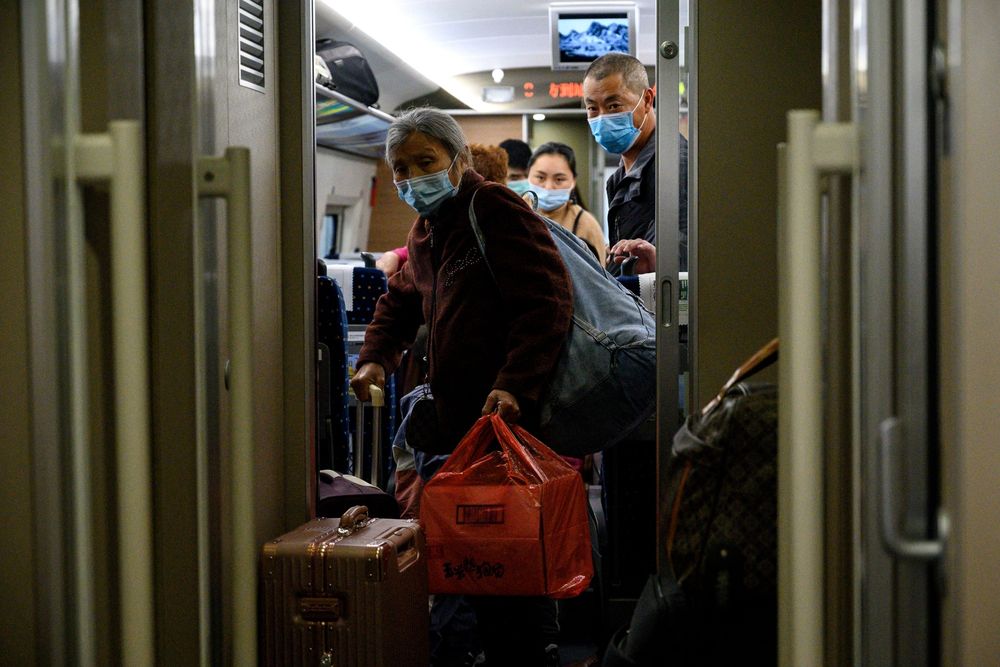Featured
People in China Need a Green Light From Alipay App to Move Around Country

(Bloomberg) — To get permission to leave China’s coronavirus epicenter and return to his job in Hong Kong, a Chinese banker needed two things: a letter from his company and a green health code from Alipay.
The man, who gave his name only as Clarence because of privacy concerns, secured the necessary permission last week and boarded a high-speed train to the border city of Shenzhen. “It was like the drama Prison Break. There are so many levels to go through and so many barriers to overcome,” he said of the challenges of leaving Hubei province.
Alipay by Ant Financial, the finance affiliate controlled by Alibaba Group Holding Ltd. co-founder Jack Ma, and Tencent Holdings Ltd.’s WeChat are credited with helping curb Covid-19 since it erupted in Wuhan in January. Because they’re the primary payments channels for everything from ride-hailing to e-commerce, they already tracked the consumer activity of hundreds of millions of users.
During the outbreak, both companies released QR code systems that can be read by smartphones and determine which individuals pose health risks and need to be quarantined or could be allowed to use public spaces and transportation. Now this technology, launched by Beijing and adapted for use on Tencent’s and Ant’s platforms, is proving instrumental in policing the country as it tries to get back on its feet.
Alipay, the payment method of choice on Alibaba’s e-commerce platforms from Taobao to Tmall, was among the first to introduce the technology. Ant’s QR-based health code system assigns each user one of three colors — green, yellow or red — based on their location, basic health information and travel history. Green allows freedom of movement, while yellow and red indicate that one needs to self-quarantine or enter a supervised quarantine facility, respectively.
The colored QR code, which is already deployed in over 200 cities, is obtained by entering information that includes name, national identity number, current location, recent travel history and ticking a box asking if the person has been in contact with an outpatient or anyone hospitalized in the last 14 days. Once everything is complete, a code is automatically generated. Each code is refreshed at midnight.
Cafes, restaurants and shopping malls throughout China also request to see the green QR code before granting permission to enter. Since these health codes were first rolled out by Alipay on Feb. 11 in Hangzhou, adoption by merchants and businesses has been swift across the country with plans for wider deployment, according to Ant Financial.
Rival Tencent worked with a unit of China’s top economic planning body to design a similar program accessible through WeChat mini programs.
A lack of transparency on how colors are generated has led to confusion and frustration with some people taking to social media to complain. Others note technical glitches that have turned into effective travel bans. “These big data platforms have made me really mad,” wrote Weibo user Miuyekanshijie on March 23. “My health code error remains unresolved … it’s seriously affecting my ability to travel.”
-

 Banking & Finance2 weeks ago
Banking & Finance2 weeks agoOman Oil Marketing Company Concludes Its Annual Health, Safety, Environment, and Quality Week, Reaffirming People and Safety as a Top Priority
-

 Economy2 months ago
Economy2 months agoMaal Card: What Oman’s New National Payment Card Means for Everyday Users
-

 Events2 months ago
Events2 months agoOER Corporate Excellence Awards 2025 Honours Entities and Innovations in Oman
-

 News2 months ago
News2 months agoSheikh Suhail Bahwan, Chairman of Suhail Bahwan Group, Passes Away
-

 News1 month ago
News1 month agoOIG Appoints New CEO to Lead Its Next Chapter of Excellence
-

 Economy2 months ago
Economy2 months agoOman Unveils Official Omani Rial Symbol in Landmark Move to Boost Global Currency Presence
-

 News1 month ago
News1 month agoReport: How India & The Middle East Are Exploiting Immense Economic Synergies
-

 Uncategorized1 month ago
Uncategorized1 month agoOman’s ISWK Cambridge Learners Achieve ‘Top in the World’ and National Honours in June 2025 Cambridge Series



























